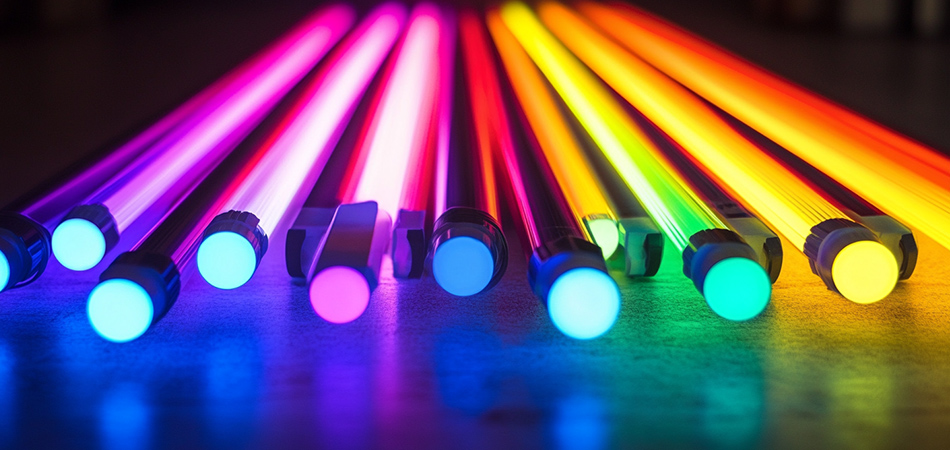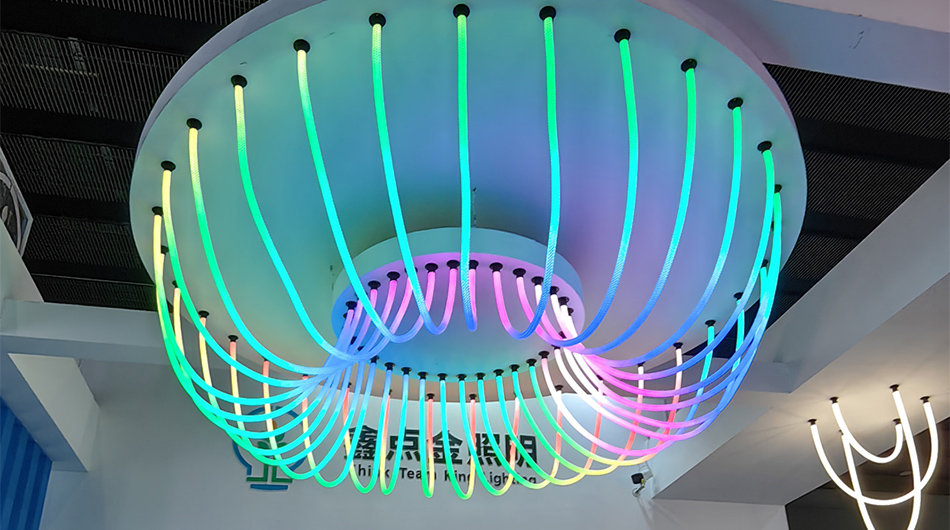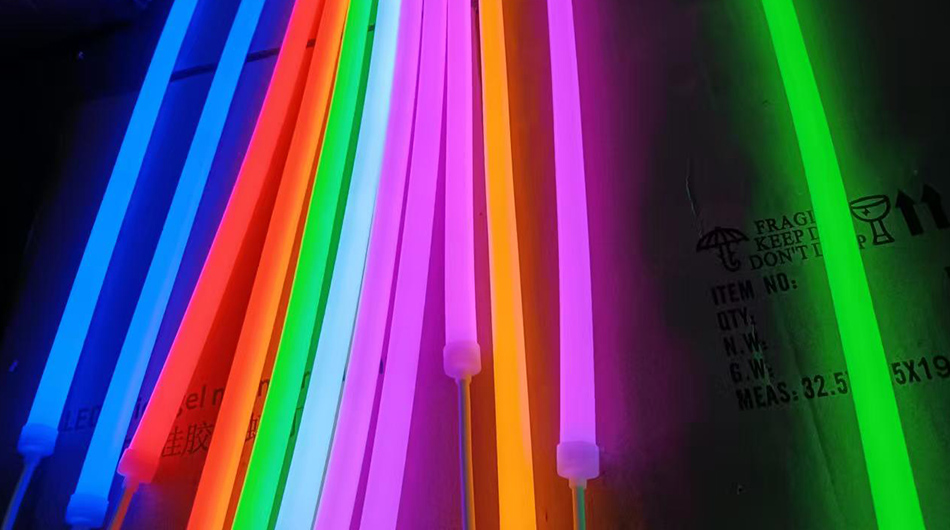Time:2025-08-02
Modern architecture is defined by clean lines, sleek surfaces, and a commitment to minimalism—qualities that extend to every element of a building, including its lighting. Facades, as the face of a structure, play a pivotal role in shaping its identity, and lighting has become a key tool in highlighting their architectural beauty after dark. Low-profile neon wall strips have emerged as a perfect fit for this design ethos, offering a subtle yet striking way to illuminate modern facades without disrupting their streamlined aesthetic. These slim, unobtrusive strips blend seamlessly with contemporary architecture, enhancing form and function while maintaining the visual clarity that defines modern design.
Modern facades prioritize simplicity, with materials like glass, concrete, steel, and stone taking center stage. Lighting for these structures must complement, not compete with, these elements—accentuating textures, emphasizing geometric shapes, and creating depth without overwhelming the design. Traditional lighting fixtures, with their bulk and visible hardware, often clash with this vision, breaking the clean lines and creating visual clutter. Low-profile neon wall strips address this by serving as “invisible” light sources, their thin profiles and strategic placement ensuring they enhance the facade’s beauty while remaining discreet. They transform facades from static structures into dynamic, illuminated landmarks after dark, adding a layer of sophistication that aligns with modern design principles.

A low-profile neon wall strip is distinguished by its slim, compact design—typically measuring just a few millimeters in thickness, allowing it to sit flush against surfaces or fit into narrow gaps. Unlike traditional neon tubes or bulky LED fixtures, these strips are engineered to be unobtrusive, with a flat, flexible form that adapts to the contours of modern facades. Their low profile is achieved through advanced LED technology, which packs bright, efficient light into a minimal footprint, and a thin, durable casing (often silicone or polycarbonate) that protects the diodes without adding bulk. This design ensures they can be integrated into tight spaces—between cladding panels, along window frames, or beneath eaves—without detracting from the facade’s overall design.
Low-profile neon wall strips for modern facades combine several key features to meet the demands of architectural lighting. Their slim, flexible construction allows them to follow the linear patterns of modern buildings, whether tracing vertical columns, horizontal ledges, or diagonal accents. The LED diodes within the strips emit uniform, flicker-free light, ensuring consistent illumination across large surfaces—critical for maintaining the facade’s visual harmony.
Many strips offer color temperature options, from cool whites that complement steel and glass to warm whites that soften concrete or stone. RGB variants provide designers with the flexibility to use dynamic colors, though modern facades often favor subtle, monochromatic tones to preserve minimalism. Weather resistance is another essential feature, with IP ratings (such as IP66 or IP67) ensuring protection against rain, wind, and UV radiation—vital for outdoor facades exposed to the elements.

Modern facades expose lighting to harsh outdoor conditions, so low-profile neon strips rely on robust materials for longevity. The outer casing, a thin yet strong silicone or polycarbonate, resists UV degradation, preventing yellowing or brittleness from prolonged sun exposure. This casing is also impact-resistant, withstanding debris blown by wind or accidental contact during maintenance.
The LED diodes are encapsulated in a moisture-proof resin, protecting them from rain, humidity, and condensation—a common issue in temperature-fluctuating environments. Conductive components use corrosion-resistant metals, such as tinned copper, to withstand salt air in coastal locations or industrial pollutants in urban areas. These materials ensure the strips maintain their performance and appearance for years, even in challenging climates.
Low-profile neon strips are designed to work harmoniously with the materials commonly used in modern facades. For glass curtain walls, they can be mounted behind mullions or along the edge of glass panels, creating a subtle glow that highlights the transparency of the material without creating glare. On concrete facades, strips fit into precast recesses or are mounted along the seams between panels, emphasizing the material’s texture and geometric patterns.
Steel or aluminum cladding provides ideal surfaces for these strips, as their smooth, flat profiles allow for flush mounting. The strips’ low heat output prevents warping or discoloration of heat-sensitive materials like wood or composite panels, expanding their compatibility. Whether the facade is a single material or a mix of textures, low-profile neon strips integrate seamlessly, acting as a unifying element that ties the design together after dark.

Designers use low-profile neon strips to achieve specific aesthetic goals on modern facades. Linear placement—along the top or bottom edges of a facade—creates a sense of height or width, emphasizing the building’s proportions. Vertical strips can highlight structural columns, adding rhythm and symmetry, while horizontal strips can break up large surfaces, creating visual interest.
For facades with unique shapes—curves, angles, or asymmetrical forms—flexible low-profile strips conform to the contours, tracing the building’s silhouette and emphasizing its uniqueness. Subtle dimming or brightness variation allows designers to create depth, with brighter sections drawing attention to key features (like entrances) and dimmer sections receding into the background. These strategies ensure the lighting enhances the facade’s design rather than distracting from it, adhering to the “less is more” principle of modern architecture.
Installing low-profile neon strips on modern facades requires precision to maintain their low-profile advantage. Mounting options include adhesive backing (for smooth surfaces), recessed channels (for a flush finish), or clips (for easy removal during maintenance). Adhesives are weatherproof and UV-resistant, ensuring they hold securely even in temperature extremes.
For large facades, the strips are often connected in segments, with hidden junction boxes to conceal wiring. Power supplies are mounted in discrete locations, such as utility rooms or behind cladding, to avoid visual interference. Wiring is routed through pre-drilled holes or existing cavities in the facade, minimizing exposure. These installation methods ensure the strips remain invisible during the day, revealing their glow only at night.
Low-profile neon strips align with the sustainability goals of modern architecture. LED technology consumes significantly less energy than traditional neon or fluorescent lighting, reducing the building’s carbon footprint and operational costs. Many strips are compatible with dimming systems or smart controls, allowing for energy optimization—brightening during peak hours and dimming during low-traffic times.
Their long lifespan (50,000+ hours) reduces the need for frequent replacements, minimizing waste and the environmental impact of manufacturing and transportation. The materials used in the strips are often recyclable, further enhancing their sustainability. For buildings pursuing green certifications (such as LEED or BREEAM), these energy and waste-saving features contribute to points and demonstrate a commitment to eco-friendly design.
Maintaining low-profile neon strips on modern facades is designed to be minimally invasive. Their durable construction reduces the need for frequent checks, though periodic inspections (preferably during daylight hours) can identify issues like loose connections or damaged casings. Cleaning is simple—rain often suffices to wash away dust, but for urban facades, a soft brush or cloth can be used to remove buildup without damaging the strips.
Replacement of individual segments (rather than entire strips) is possible, thanks to modular design, minimizing disruption to the facade’s appearance. Many manufacturers offer warranties of 5+ years, ensuring long-term performance and reducing maintenance concerns for building owners. These features make low-profile neon strips a practical choice for modern facades, where both aesthetics and functionality are priorities.
Examples of low-profile neon strips in modern architecture abound. A sleek glass office tower in a downtown district uses cool white strips along its vertical mullions, creating a subtle glow that makes the building stand out against the skyline without competing with surrounding lights. A residential complex with concrete and wood facades employs warm white strips in recessed channels, softening the industrial edge of the concrete and highlighting the natural grain of the wood.
An art museum with a curved, asymmetrical facade uses flexible low-profile strips to trace its unique shape, turning the building into a sculptural light installation after dark. These case studies demonstrate how the strips enhance the facade’s design, creating memorable nighttime identities that reflect the building’s purpose and style.
Low-profile neon wall strips have become an essential tool in modern facade design, offering a way to illuminate buildings with subtlety, efficiency, and style. Their slim profiles, durable construction, and versatile integration with modern materials make them ideal for enhancing the clean lines and minimalist aesthetic of contemporary architecture. By prioritizing discretion and functionality, these strips transform facades into illuminated works of art after dark, adding value and identity to buildings without compromising their design integrity. As modern architecture continues to evolve, low-profile neon strips will remain a key element in creating facades that are as striking at night as they are by day.